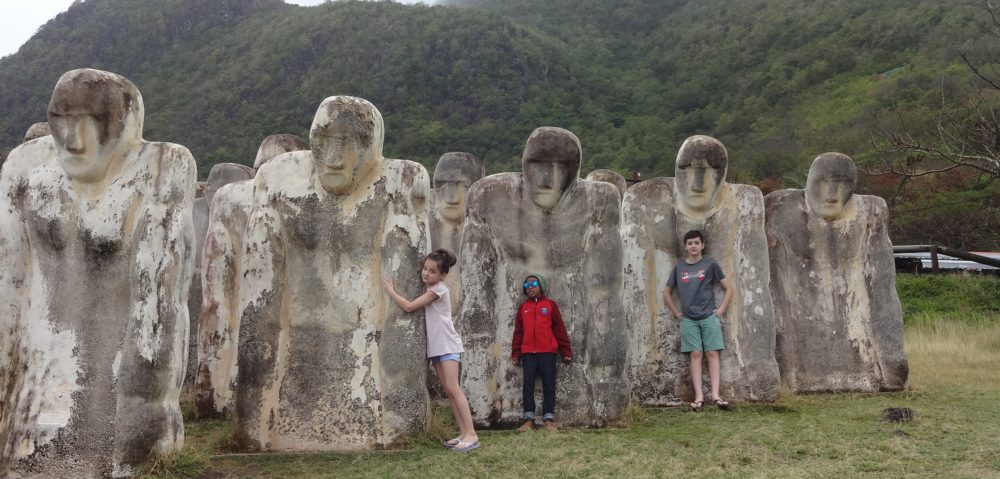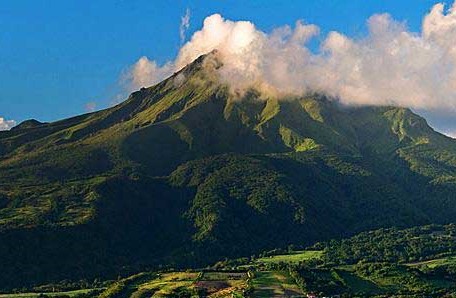Martinique – History
 July 21, 2017
July 21, 2017Political History
Martinique, a small island in the Lesser Antilles in the Caribbean, possesses a long and complex history. Columbus visited the island in 1502 on his fourth voyage, but Spain didn’t seem interested. The island remained un-colonized until 1634 when a Frenchman named Pierre Bélain Sieur D’Ensambuc started a colony on the island. He turned over rule to his nephew Jacques-Dyel du Parquet. The French king, Louis XIV, resumed control of the island in 1658.
Martinique became a domain of the French crown in 1674. In 1762 the British captured the island, but returned it in 1763 under the terms of the Treaty of Paris. The British captured the island again in 1794 and maintained control of it until 1802 when the French regained control. The British made one more attempt to regain permanent control of the island in 1809, but Martinique returned to French control in 1814 permanently.
Martinique received the status of Département of France in 1946 and in 1974 the status of Région of France.
Slavery
In 1636 King Louis XIII signed a decree authorizing the use of slaves in the Lesser Antilles. As agriculture grew so did the influx of African slaves. The institution of slavery continued for more than 200 years with uprisings in 1789, 1815, and 1822 before finally being abolished all together in 1848. In 1815 it became illegal to import new slaves to the island, but slavery itself was still legal. Unfortunately new slaves continued to be brought in illegally. Traders docked their ships at night to prevent detection.
On the night of April 7, 1830, an illegal slave ship carrying African slaves sank of the coast of Le Diamant. More than 40 slaves chained together in the boat’s hull drowned. In 1998 a Martinican sculptor by the name of Laurent Valére completed a memorial to this catastrophic event for the 150th anniversary of the emancipation of slaves. The Cap 110 Memorial consists of 20 statues 8 feet high made of concrete and sand arranged in a triangular shape. Each statue looks out to sea. Today, it’s one of the most visited and photographed sites on the island.
 Mt. Pelée
Mt. Pelée
Mt. Pelée is a volcano on the northern end of Martinique overlooking the city of Saint Pierre, which was once one of the largest cities of the Caribbean. In April of 1902 the volcano began to show signs of a coming eruption, but residents were not concerned. They figured they had plenty of time to get out of the way of a lava flow. Many came from the countryside for refuge and many more flocked to the city to see the volcano. No one anticipated what would happen on May 2nd. A super heated cloud of poisonous gas, volcanic ash, and dust erupted from the volcano at hundreds of miles per hour. The pressure wave coming from the volcano flattened just about every building in Saint Pierre and burned everything in an instant. 30,000 people died.
There were a few survivors. While most of the ships in port were capsized and their crew lost, one ship managed to stay upright. Half of its crew survived though all suffered burns. A young girl named Havivra Da Ifrile made it into a small boat and was able to make it to a nearby cave. She was later found in a burned and broken boat almost 2 miles out to sea. She too suffered burns. Another man, Léon Compère-Léandre, showed up in Fort-de-France naked and burned claiming to have survived as well. His story of survival is unclear and people considered him a madman.
The luckiest survivor of all was Ludger Sylbaris. He got drunk and got into fights often prompting police arrest. The night before the eruption, police arrested him for drunken fighting and threw him in a prison cell located partly underground; it lacked good ventilation. Though he received a few burns, he managed to survive without suffocating from the poisonous gas. He went on to become an attraction at the Barnum and Bailey circus where he told his story to crowds.
Additional Links for Further Reading
Information on Martinique
More on Martinique’s history
Information on Anse Cafard Memorial
The eruption of Mt. Pelée
Additional information on Mt. Pelée’s survivors
